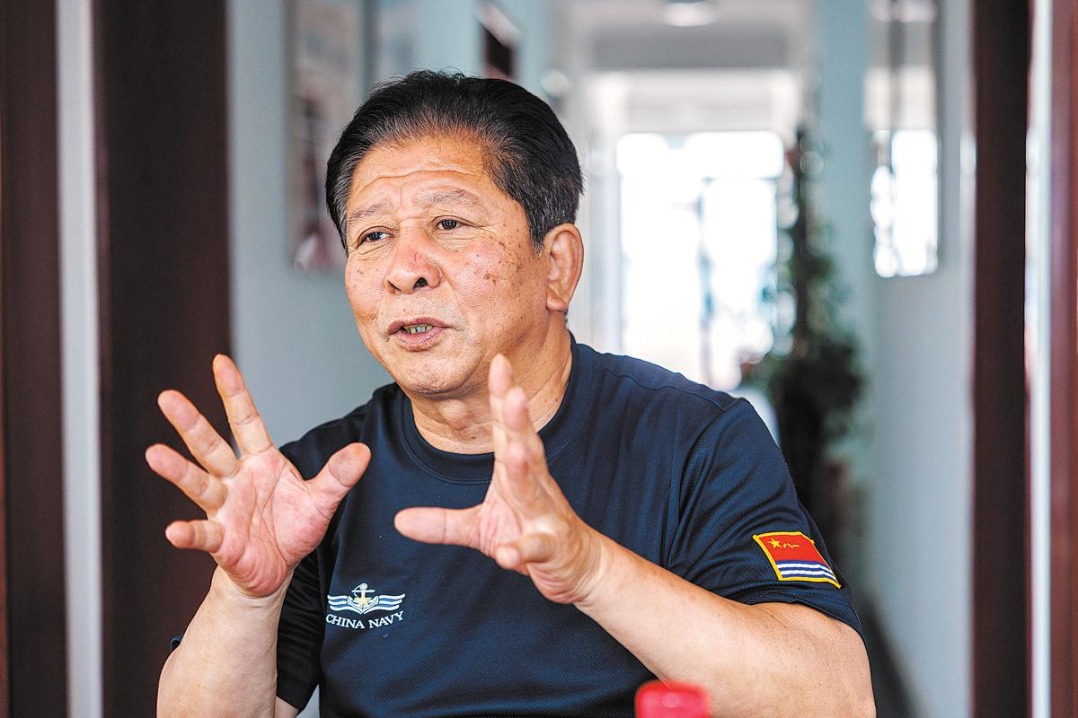Zones give impetus to heritage protection
Designation aims to rejuvenate cultural sector nationwide


In mid-June, the Ministry of Culture and Tourism announced the establishment of seven new national-level cultural ecology protection zones. These zones aim to preserve a range of cultural heritages, including ethnic cultures such as Hakka and Tibetan, as well as intangible cultural heritage projects, notably the Chinese-style rap culture of Baofeng in Henan province.
Since the Administrative Measures for National Cultural Ecology Protection Zones came into effect in March 2019, the number of cultural ecology protection zones at the national level has reached 24.
After years of exploring the protection of ICH, the management measures released by the country's top cultural affairs regulator have become a unique system and experience for China, said experts and officials. This approach has successfully fostered a strong atmosphere across the nation for preserving outstanding cultural traditions.
A national-level cultural ecology protection zone refers to a designated area focused on safeguarding ICH projects and the cultural and ecological environments that nurture and sustain them. This approach, as required by the regulation, must "reflect the people, the cultural objects and life".
According to the regulation, each project applying for a national cultural ecology protection zone must go through several years as a pilot area after receiving approval. Following this period, the ministry will organize an expert review for the establishment, evaluation, filing and licensing of such reserves. Well-built ones will be supported, and those failing will lose their licenses.
The newly designated cultural ecology protection zone of rap culture of Baofeng in Henan province is the first of its kind in China focusing on the rap culture, or quyi in Chinese, a traditional performance art including storytelling, cross-talk, music and rhythmic speech.
In January, an annual festival themed on the performing art of quyi in Baofeng attracted about 1,900 performers from across the country. The event featured various types of quyi performers. Even the singer of an interlude from the popular game Black Myth: Wukong, which uses the art form of Shaanbei storytelling originating from the northern part of Shaanxi province, participated in the event and exchanged with other performers.
"The development and sustained appeal of this cultural form can be attributed to the policy and financial support stemming from regulations that encourage the establishment of cultural ecology preservation zones, as well as the subsequent implementation of cultural protection mechanisms," said Shen Hongxia, who works at the cultural ecology protection zone of rap culture of Baofeng.
In addition to rap culture, ICH projects such as the traditional brewing techniques of Baofeng liquor and the firing techniques of local porcelain, along with archaeological sites and historical relics in the area, are all included within the protection scope of the cultural preservation zone, creating a systematic approach to preservation, explained Shen.
She added that the rap culture has thrived to this day by integrating with the region's unique cultural and geographical environment. It draws nourishment from various forms of local ICH, including folk literature, traditional theater, music and craftsmanship.
Song Junhua, a professor from Sun Yatsen University who has researched the protection of ICH for decades, said that China's approach has evolved over time, from the initial focus on prioritizing the preservation of precious and endangered projects to emphasizing its creative transformation and innovative development. More recently, it stresses the systematic protection of ICH.
"The current important goal is to effectively implement the systematic protection of intangible cultural heritage. The establishment of national cultural ecology protection zones is a unique exploration by China in this field," said Song.
Starting from the inclusion of Kunqu Opera in the UNESCO list of Masterpieces of the Oral and Intangible Heritage of Humanity in 2001, China has been on a 24-year journey of protecting ICH, accumulating a wealth of practical experience, he said.
The implementation of the Intangible Cultural Heritage Law in 2011 elevated the guidelines and policies regarding cultural heritage protection to a matter of national will, and transformed effective experiences in ICH protection into a legal framework. And the setting up of national cultural ecology protection zones is an innovative method and China's solution to the conservation of ICH.
According to the ministry, the central government has established a dedicated national fund for the operation of national cultural ecology protection zones, investing billions of yuan to date. In addition to the current 24 national-level cultural ecology protection zones, there are also more than 210 such protection zones at the provincial level across the country.
During the past decades, there has been a comprehensive enhancement in the awareness of ICH protection. Initially, the government mobilized efforts to apply for projects, followed by local communities spontaneously engaging in the preservation. This has gradually led to more people actively promoting and experiencing intangible cultural heritage, added Song.
For Yeshe Ihamo, a researcher on Gesar at the Chinese Academy of Social Sciences, the thriving of the Gesar culture can be partly attributed to the establishment of the Gesar cultural ecology protection zone in several places, including the Golog Tibetan autonomous prefecture of Qinghai province.
Gesar culture focuses on the epic tale of King Gesar jointly created by people of multiple ethnic groups. It is primarily passed down through oral singing performed by storytellers mainly in the Xizang autonomous region, Qinghai and Gansu provinces.
Performers used to simply sing verses from the Gesar epic while seated or standing in tents, often found in pastoral areas. With changes in people's lifestyles and entertainment preferences, this traditional form of performance was on the brink of extinction in the 1980s.
Today, however, the storytellers of the Gesar epic tradition can be seen in tea houses, restaurants and professional theaters in many places in Xizang, thanks to sustained support from governments at all levels.
Yeshe Ihamo said that the establishment of the Gesar national cultural ecological protection zone has drawn more attention to it. Some modern art forms, such as stage plays, have incorporated it into their performances. Through initiatives like bringing Gesar into schools, students have begun to learn about it and develop an interest in it. Gesar storytellers have also ventured beyond Tibetan-inhabited areas to perform and exchange ideas across the country.
"The implementation of national-level cultural ecological protection zones is particularly important. It treats culture like an ecosystem, preserving it and placing it on the land that nurtures it, which is indeed effective," she said.
"In the past, our efforts to protect certain projects often disconnected them from their cultural and natural ecological contexts, leading to some missteps. However, the explorations in recent years have resulted in a successful Chinese solution to ICH protection," she added.
dengzhangyu@chinadaily.com.cn
- Zones give impetus to heritage protection
- Graduates drive post-gaokao wave of consumer spending
- Ministry warns of flood risk in north, drought in south
- Northern China braces for torrential rains
- From rickety bikes to automated strollers, modernization transforms county
- Youths urged to maintain firm ideals, deepen innovation





































